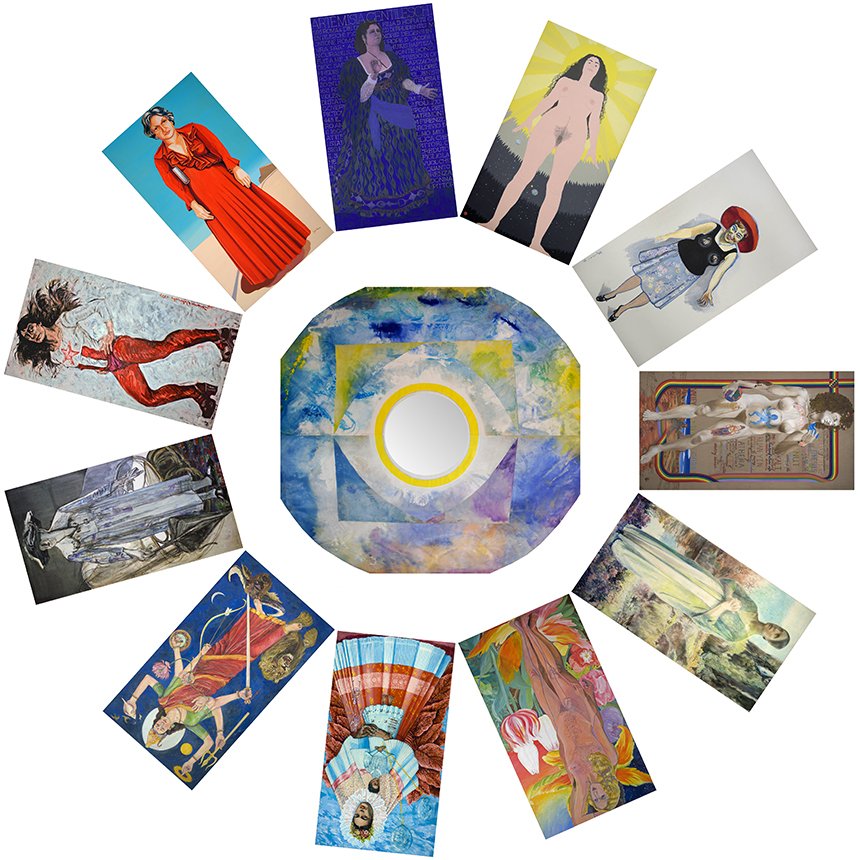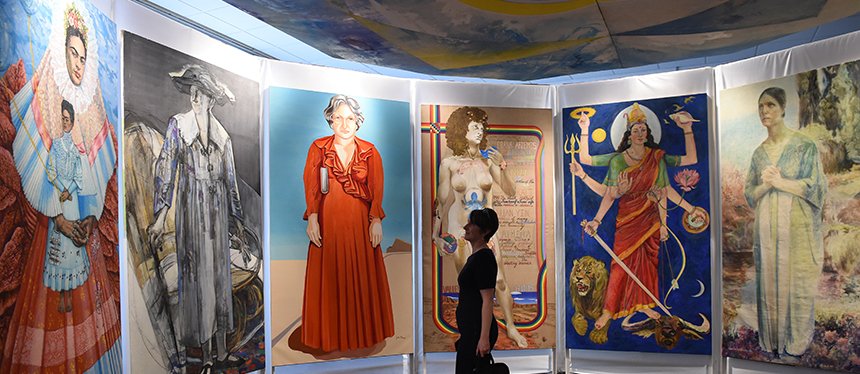The Sister Chapel
The Sister Chapel
The Sister Chapel

June Blum / Maureen Connor / Martha Edelheit
Elsa M. Goldsmith / Shirley Gorelick
Ilise Greenstein / Betty Holliday / Diana Kurz
Cynthia Mailman / Alice Neel / Sylvia Sleigh
May Stevens / Sharon Wybrants
The Sister Chapel was conceived in 1974 by Ilise Greenstein, who envisioned a monumental “hall of fame” in which women’s achievements would be presented from a female perspective. Greenstein’s participation in several feminist consciousness-raising groups and all-women activist organizations prompted her to question the enduring androcentric view of history. Using a nominal pun on the Sistine Chapel, she proposed a secular, nonhierarchical alternative to the patriarchal system embodied in Michelangelo’s renowned ceiling fresco.
In the spirit of feminist solidarity, Greenstein collaborated with twelve other women, whose individual contributions shaped the character and appearance of The Sister Chapel. The artists collectively established uniform dimensions for the figure paintings and agreed that each canvas would depict a standing female “role model.” The particular subject and manner of execution were left entirely to the creator of each painting. As a result, the canvases form a visually cohesive group without diminishing the individuality of any artist. Diverse contemporary and historical women, deities, and conceptual figures populate the all-female pantheon of The Sister Chapel. Above them, Greenstein’s enormous abstract ceiling features a mirrored center to remind visitors that there is no limit to women’s potential.
The Sister Chapel premiered in January 1978 at P.S.1, an experimental exhibition space in Long Island City, New York. The installation traveled to three other venues between 1978 and 1980, but its presentation was hindered by architectural and spatial limitations. Displayed near the circle of monumental paintings was the model for an unrealized fabric structure, which was designed by Maureen Connor to house the abstract ceiling and figural canvases. The fabric pavilion was finally constructed when The Sister Chapel returned to public view at Rowan University in 2016. Three years later, the installation was made permanent by a generous gift from the Shirley Gorelick Foundation.

The Sister Chapel Catalog: View and Download Full PDF Catalog
The Sister Chapel: An Essential Feminist Collaboration
Exhibition Catalog
March 28 – June 30, 2016
Essay by Andrew D. Hottle
